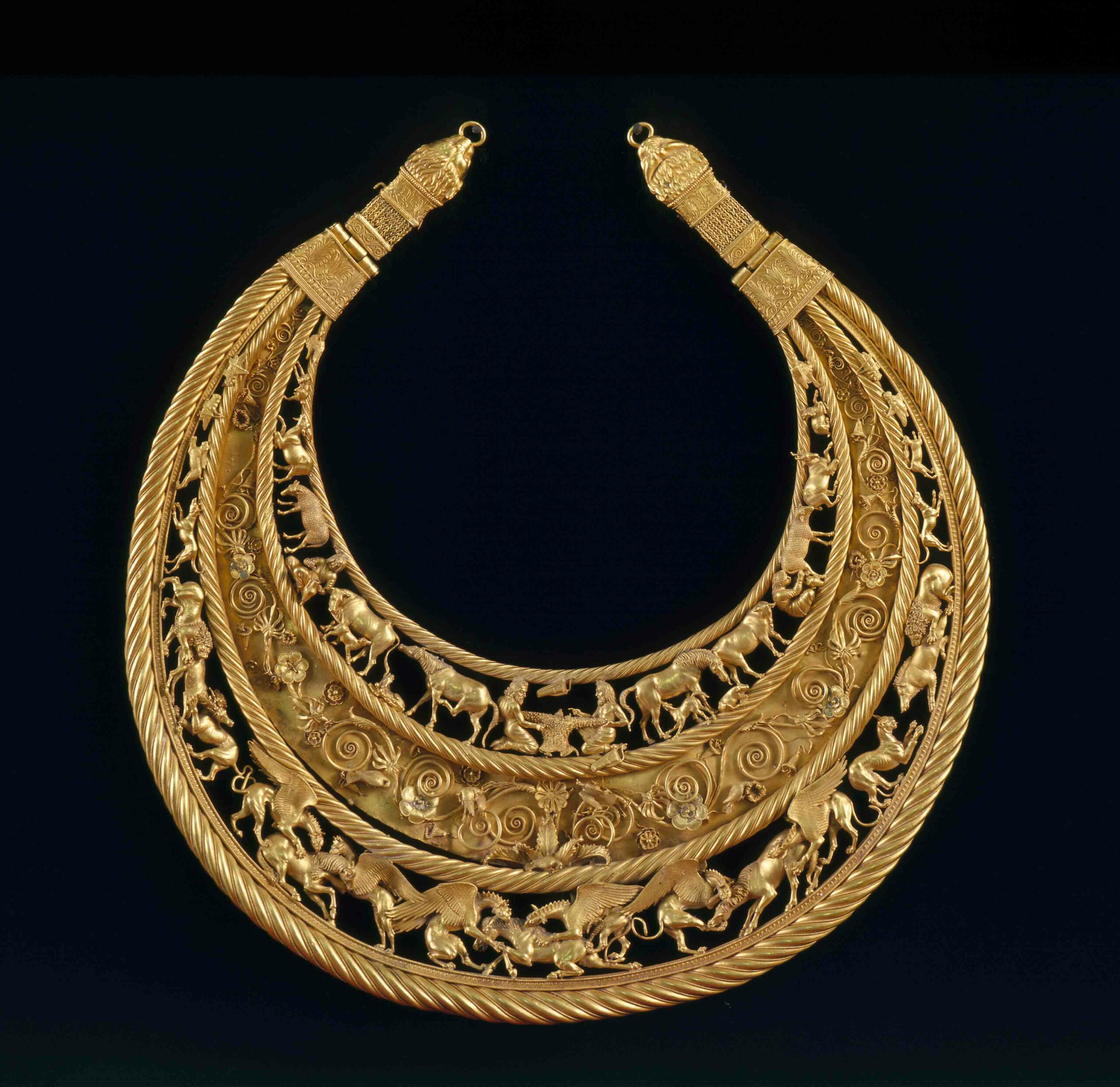Introduction
The gold pectoral of the Scythian kings, dating back to the 4th century BC, is one of the most remarkable archaeological discoveries ever made in Ukraine. Crafted by Greek artisans for the nomadic Scythians, this extraordinary artifact highlights the cultural and artistic exchange between these two ancient civilizations. Discovered on June 21, 1971, near the city of Ordzhonikidze (now Pokrov) in the Dnipropetrovsk region, the pectoral was unearthed from a Scythian burial mound by an archaeological team led by Ukrainian archaeologist Boris Mozolevsky.
Historical Discovery
The Find at Tolstaya Mogila
The pectoral was discovered in a burial mound known as Tolstaya Mogila, or “Fat Mound.” This mound held the remains of a high-ranking Scythian king and his treasures, which included the pectoral along with other artifacts that have provided invaluable insights into the wealth and burial customs of the Scythian elite. The discovery was considered groundbreaking, shedding light on the powerful nomadic tribes that dominated the Eurasian steppe during the Iron Age.

Artistry and Technique
The pectoral weighs over 1 kilogram (about 2.2 pounds) and measures 30.6 centimeters (about 12 inches) in diameter. Its design is divided into three distinct tiers or sections, each with intricate depictions of life and mythology.
- Upper Tier: The upper section of the pectoral portrays fierce lions and griffins in battle, symbolizing the strength and dominance of the Scythian rulers. These mythical creatures were often associated with royalty and power, emphasizing the king’s role as a protector of his people.
- Middle Tier: The central section features lush floral motifs, a hallmark of Greek artistic influence. This section highlights the advanced metalworking skills of Greek artisans who were likely commissioned by the Scythians. The floral design also symbolizes the beauty and harmony of nature, possibly reflecting a connection to fertility and life.
- Lower Tier: The bottom section depicts everyday scenes from Scythian life, including men tending to horses and performing other pastoral activities. This is a rare glimpse into the daily lives of the Scythians, who were known for their mastery of horseback riding and their nomadic lifestyle.
Cultural Analysis
Fusion of Scythian and Greek Cultures
The pectoral is an outstanding example of the cultural exchanges that occurred between the Scythians and the Greeks. While the Scythians were nomadic warriors, the Greeks were known for their highly developed cities and art. The collaboration between Greek artisans and Scythian patrons resulted in this unique blend of styles—combining the Scythians’ love for bold, symbolic imagery with the Greeks’ refined metalwork and decorative designs.

This fusion of Greek and Scythian elements in the pectoral reveals how interconnected ancient civilizations were. Despite their geographic and cultural differences, the Scythians and Greeks engaged in trade and exchange, allowing ideas, goods, and artistic techniques to flow between them.
Symbolic Meaning of the Pectoral
The pectoral is more than just a piece of jewelry; it serves as a symbol of the Scythian king’s power, wealth, and connection to both the natural and supernatural worlds. The fierce animals on the pectoral’s upper tier may represent the king’s ability to control the forces of nature and his enemies. Meanwhile, the floral motifs suggest a connection to the cycle of life and fertility, essential for a nomadic people reliant on livestock and agriculture.

The everyday scenes on the lower tier emphasize the Scythians’ connection to their environment, highlighting their pastoral way of life. As nomads, their survival depended on their ability to manage herds, navigate vast landscapes, and protect their communities.
Conclusion
The gold pectoral of the Scythian kings is a testament to the power and wealth of the Scythian elite, as well as the profound influence of Greek artistry on their culture. Discovered in the Tolstaya Mogila burial mound, this masterpiece continues to captivate historians and archaeologists alike. Its intricate design and symbolic imagery not only reflect the technological advancements of the era but also offer a window into the complex interplay between nomadic and settled civilizations in the ancient world.
Today, the pectoral is housed in the Museum of Historical Treasures of Ukraine in Kyiv, where it remains one of the most treasured artifacts of the country’s ancient history.

